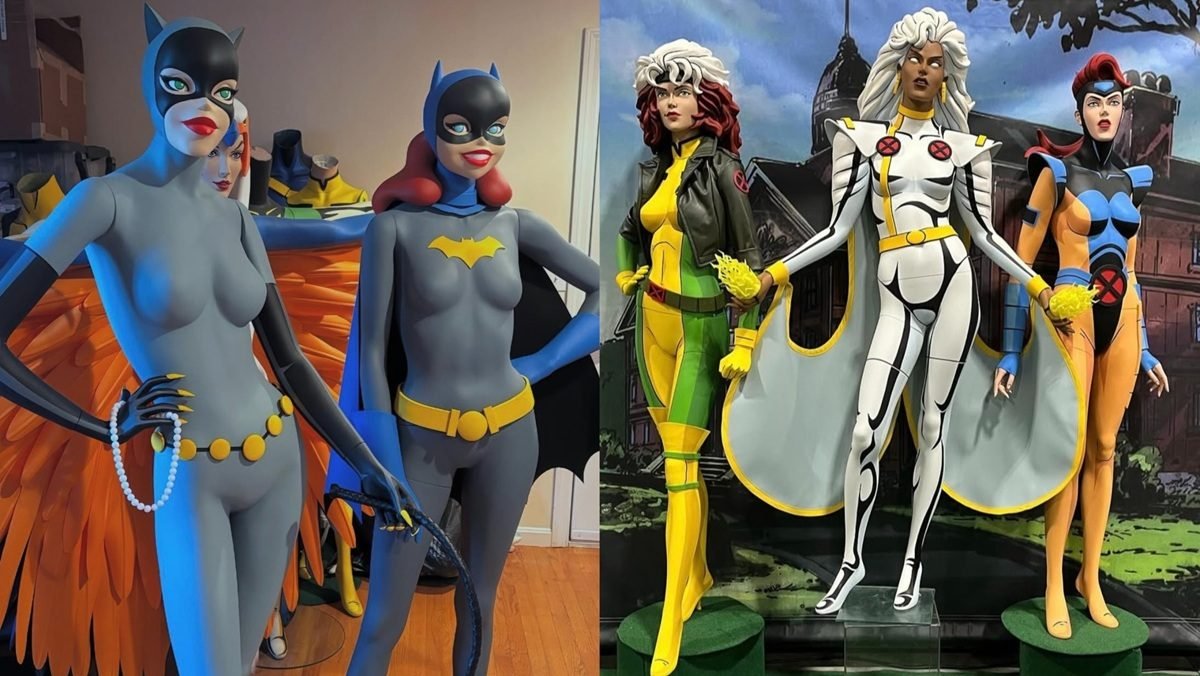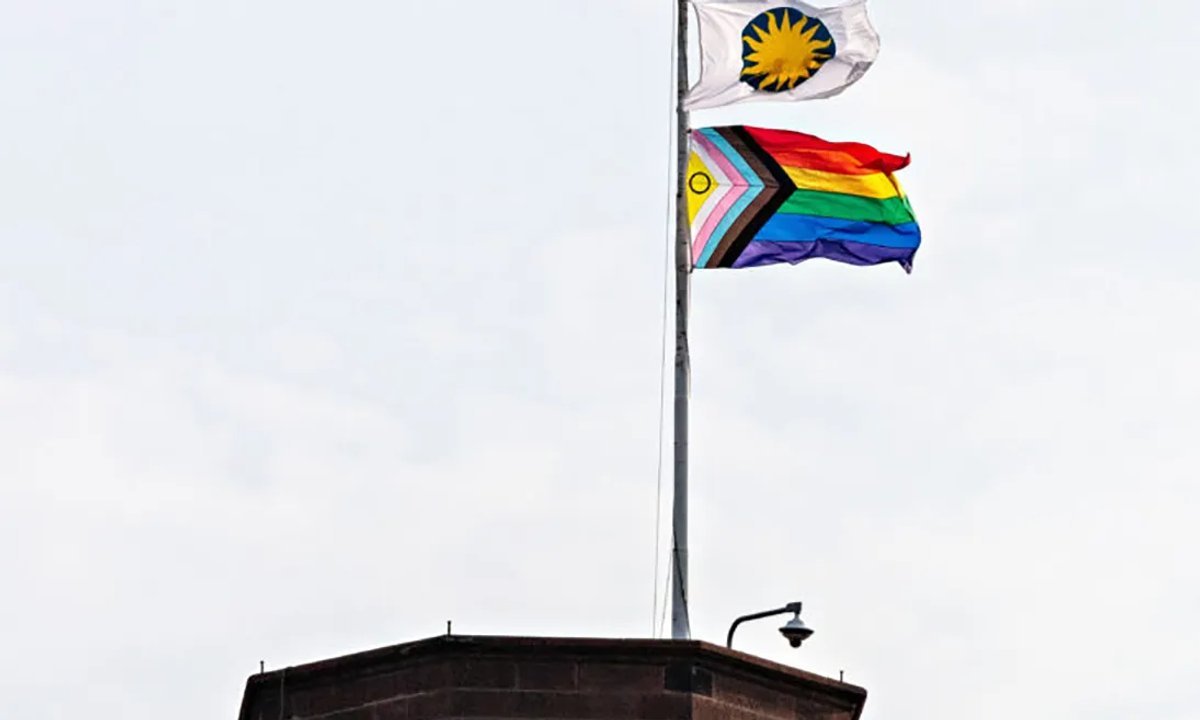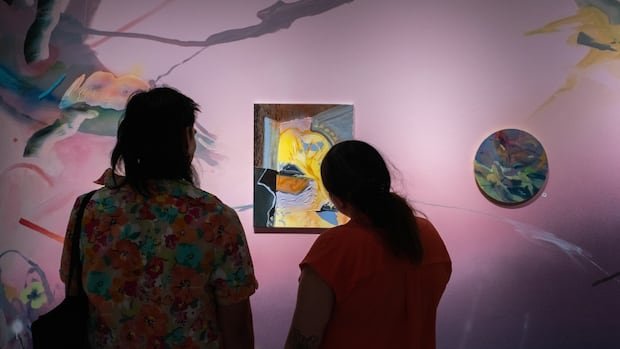V&A show features select images from Elton John’s collection

By: Amit Roy
SIR ELTON JOHN and David Furnish have a collection of 7,000 photographs, out of which the V&A has selected 300 for an exhibition called Fragile Beauty.
The work of 140 photographers is represented, split into sections such as Fashion; Stars of Stage, Screen and Studio; Reportage; the American Scene; Desire; Constructed Images; and Towards Abstraction. Visitors are warned: “This exhibition contains adult themes, including depictions of substance use, death, nudity and sexual intercourse.”
The curators are Duncan Forbes and Lydia Caston of the V&A, who have collaborated with Newell Harbin, director of the collection which Sir Elton and Furnish began in the 1990s.
In the preface to the catalogue, they say: “We invite audiences to find their own pathways and select their own favourite photographs.”

Which is exactly what I did. I walked round the whole exhibition in 15 minutes and then focused on the ones I really wanted to see.
If I had to pick one, it would be of a man plummeting to earth when the Twin Towers in New York were hit on September 11, 2001. The Falling was taken by Richard Drew.
Sir Elton commented: “For me, one of the most beautiful images that I’ve got is the man falling from the World Trade Center by Richard Drew. The man is falling in a straight line. It’s the most beautifully geometric photograph you can possibly make, in the most tragic circumstances. The photograph was on the front page of several newspapers when it happened and they had to take it off.”

“It took two years to get. He (the photographer) didn’t want to sell it to anyone. He wanted to make sure that our intentions as collectors were sincere. He didn’t want it to be seen as exploitation. It’s always been in a drawer because it’s very upsetting as a photograph on the wall. But I always say, ‘In tragedy, there’s sometimes the most beautiful thing.’”
Another image that stands out is of Frank Sinatra and his body double, taken in Miami Beach by Terry O’Neill in 1968.
Other images that drew me included a black and white portrait of Marilyn Monroe taken by Richard Avedon in New York City in 1957.
Sir Elton explained: “Growing up, I always thought she was glamorous, but I never realised how beautiful she was until I saw the photographs by Avedon and Bert Stern. I thought she was a great actress and an enigma. You’ll never know how she died, you’ll never know who she was. I’m a bit like that. I can turn ‘Elton John’ on if you want me to, and she could turn ‘Marilyn Monroe’ on when she wanted to.”
I was also taken by the photograph of John F Kennedy, snapped by Garry Winograd at a Democratic convention in Los Angeles in 1969, and the moment of his younger brother Robert F Kennedy’s assassination, captured by Boris Yaro in Los Angeles in 1968.
Others which caught my attention includes Yasamasa Moimura’s 2007 self-portrait morphing into Albert Einstein; and Adam Fuss’s 2011 picture of Zachary, the elder son of Sir Elton and Furnish.
Machines, too, can have beauty, as illustrated by Thomas Struth’s 2021 photograph of the X-Ray Telescope at CERN.
The exhibition, which is supported by Gucci, covers the period from the 1950s to the present day, and includes the work of many famous photographers, among them Robert Mapplethorpe, Cindy Sherman, William Eggleston, Diane Arbus, Sally Mann, Zanele Muholi, Ai Weiwei and Carrie Mae Weems.

There are fashion photographs by Horst P Horst, Irving Penn and Herb Ritts, as well as some of the newest additions to their collection including Tyler Mitchell, Trevor Paglen and An-My Lê.
In the preface, the curators, Forbes, Caston and Harbin, acknowledge that “John and Furnish gave us access to their homes where photographs are displayed liberally, over almost every spare inch of wall, and it was literally sitting at their kitchen table that this exhibition began to take shape.
“As is now well known, John began to collect photography when he left rehab in 1990. He replaced a decade of addiction with another less self-destructive pursuit.
“Our key challenge as curators was to convert an extensive and exuberant private collection into a corpus of photographs for public display.

“We were helped significantly by being able to experience the collection in situ, gaining a feeling for how John and Furnish encounter the collection every day. It is a little odd, perhaps, to stand in a stranger’s shower room to make selections for an exhibition, but it did lend us insight into how intensely this collection is lived. Usually, photographs sit in drawers or boxes, waiting for years to emerge into the light to ignite the spark of memory or a trace of history. However, with the help of their curator, John and Furnish rotate their collection regularly.
“Fragile Beauty therefore reflects very directly the passion of the collectors. It begins with fashion, John’s initial inspiration and a continuing interest for Furnish. It then moves on to portraits of some of the great musicians and actors of the last 70 years. John is fascinated by those who suffered for their art – the collection contains multiple, extraordinary images of Marilyn Monroe and Chet Baker, for example.”
The curators stress: “Central to the collection is John and Furnish’s love of the male form and their urge to collect photographs celebrating masculine beauty. The couple has also collected many important photographs of gay liberation, such as Sunil Gupta’s series Christopher Street or William Klein’s Act Up photographs. Both collectors have been attentive to queer or queer-identifying artists – from George Platt Lynes to Peter Hujar to Ryan McGinley to Wolfgang Tillmans to Zanele Muholi – and their sensibility is a major feature of the collection. It might be argued that much of the exhibition’s momentum is lent by artists combating sexual oppression, racism or other forms of persecution through the articulation of identities in photography.

“Themes of liberation continue in other aspects of the collection. In the section titled Reportage, John and Furnish show highlights of Civil Rights photography from the 1960s, including many classic photographs of the period. The ‘Freedom Struggle’, as it was referred to at the time, is played out across different political movements and embodied by the most significant leaders of the era, some of whom were assassinated for their commitment to progressive change.
“Photography from the USA features strongly in the collection, and it contains many of the great American photographers of the post-war period.
“The collection is at times surprising, playful and – as John reminded us as we planned the exhibition – mischievous in spirit. It is also deadly serious.”
n Fragile Beauty: Photographs from the Sir Elton John and David Furnish Collection is at the V&A until January 5, 2025.






